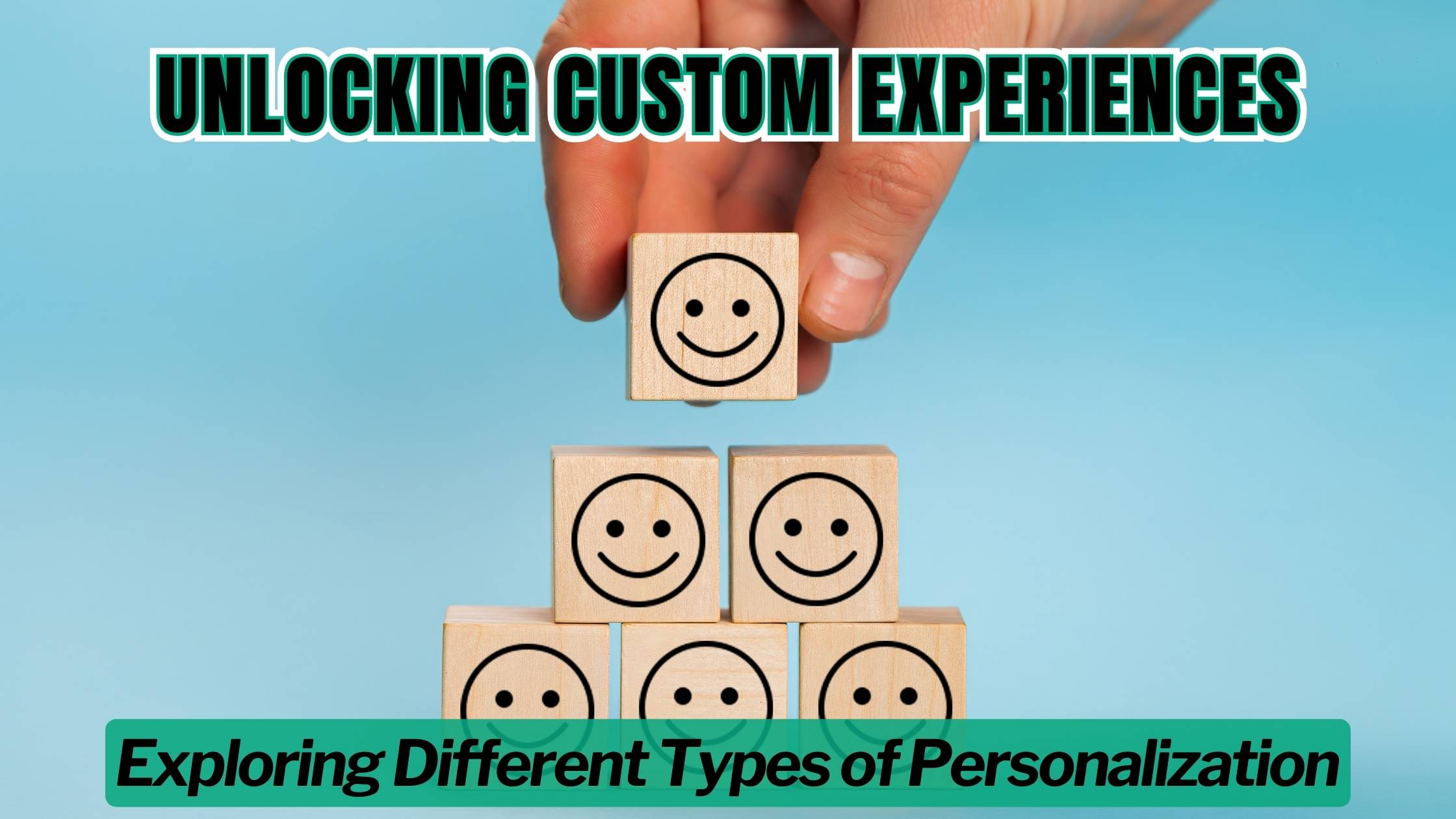Unlocking Custom Experiences: Exploring Different Types of Personalization


Unlocking Custom Experiences: Exploring Different Types of Personalization
In today’s digital landscape, personalization has become a cornerstone of successful marketing strategies. From tailored product recommendations to customized email campaigns, businesses are leveraging personalization to enhance customer experiences and drive engagement. But what exactly are the different types of personalization, and how can businesses unlock their full potential? In this article, we’ll delve into the various types of personalization and explore how they can be implemented to create custom experiences that resonate with audiences.
Understanding Personalization
1. Behavioral Personalization
Behavioral personalization involves analyzing user behavior and interactions with your website or app to deliver personalized experiences. By tracking actions such as page views, clicks, and purchases, businesses can tailor content and recommendations to match individual preferences and interests.
2. Demographic Personalization
Demographic personalization relies on demographic data such as age, gender, location, and income to customize content and messaging. By segmenting audiences based on demographic attributes, businesses can deliver targeted campaigns that resonate with specific demographic groups.
3. Contextual Personalization
Contextual personalization takes into account the context in which a user interacts with your brand, such as their device, location, and time of day. By contextualizing content based on these factors, businesses can deliver relevant and timely experiences that meet users’ immediate needs and preferences.
4. Psychographic Personalization
Psychographic personalization focuses on understanding the psychological traits, values, and motivations of individual users. By segmenting audiences based on psychographic characteristics such as personality, lifestyle, and interests, businesses can create content and messaging that resonates on a deeper emotional level.
Strategies for Implementing Personalization
1. Data-driven Insights
Leverage data analytics tools and customer relationship management (CRM) systems to gather insights into user behavior, preferences, and demographics. By analyzing data, businesses can identify patterns and trends that inform personalized content strategies.
2. Dynamic Content Delivery
Utilize dynamic content delivery systems to serve personalized content and recommendations in real-time based on user interactions and preferences. By dynamically adjusting content elements such as images, text, and offers, businesses can create engaging and relevant experiences for each user.
3. A/B Testing
Conduct A/B tests to measure the effectiveness of different personalization strategies and optimize content based on performance metrics. By testing variations of personalized content, businesses can identify the most effective approaches for driving engagement and conversion.
4. Cross-channel Integration
Integrate personalization efforts across multiple channels and touchpoints, including websites, email campaigns, social media, and mobile apps. By delivering consistent and cohesive experiences across channels, businesses can create seamless customer journeys that enhance brand loyalty and satisfaction.
Relevant SaaS Products for Personalization
As businesses seek to unlock custom experiences through different types of personalization, consider leveraging the following SaaS products:
1. Optimizely
Optimizely is an experimentation platform that enables businesses to test and optimize website content and user experiences in real-time. With features for A/B testing, multivariate testing, and personalization, Optimizely empowers businesses to deliver targeted and personalized experiences to their audience.
2. Segment
Segment is a customer data platform that helps businesses collect, clean, and unify customer data from various sources. With Segment, businesses can create a single view of their customers and leverage data insights to drive personalized marketing campaigns and experiences across channels.
3. Dynamic Yield
Dynamic Yield is a personalization platform that enables businesses to deliver individualized experiences across web, mobile, email, and advertising channels. With features for behavioral targeting, product recommendations, and AI-driven optimization, Dynamic Yield helps businesses maximize engagement and conversion rates.
4. Evergage
Evergage is a real-time personalization platform that allows businesses to deliver personalized experiences across websites, web applications, and mobile apps. With features for behavior tracking, segmentation, and machine learning, Evergage enables businesses to create custom experiences that drive user engagement and loyalty.
5. Qubit
Qubit is a personalization platform that helps businesses deliver tailored experiences across digital channels. With features for data management, segmentation, and optimization, Qubit empowers businesses to create personalized content and recommendations that resonate with their audience.
Conclusion
As consumers increasingly expect personalized experiences from brands, businesses must embrace different types of personalization to remain competitive in today’s market. By understanding the various types of personalization and implementing effective strategies and technologies, businesses can unlock custom experiences that drive engagement, loyalty, and revenue.
Subscribed.FYI Deals: Empowering Your Personalization Strategy
To optimize your personalization strategy and leverage the latest SaaS tools for data analytics, content delivery, and customer engagement, explore exclusive deals on Subscribed.FYI. Sign up for free today to unlock savings and streamline your personalization efforts.
Relevant Links:





